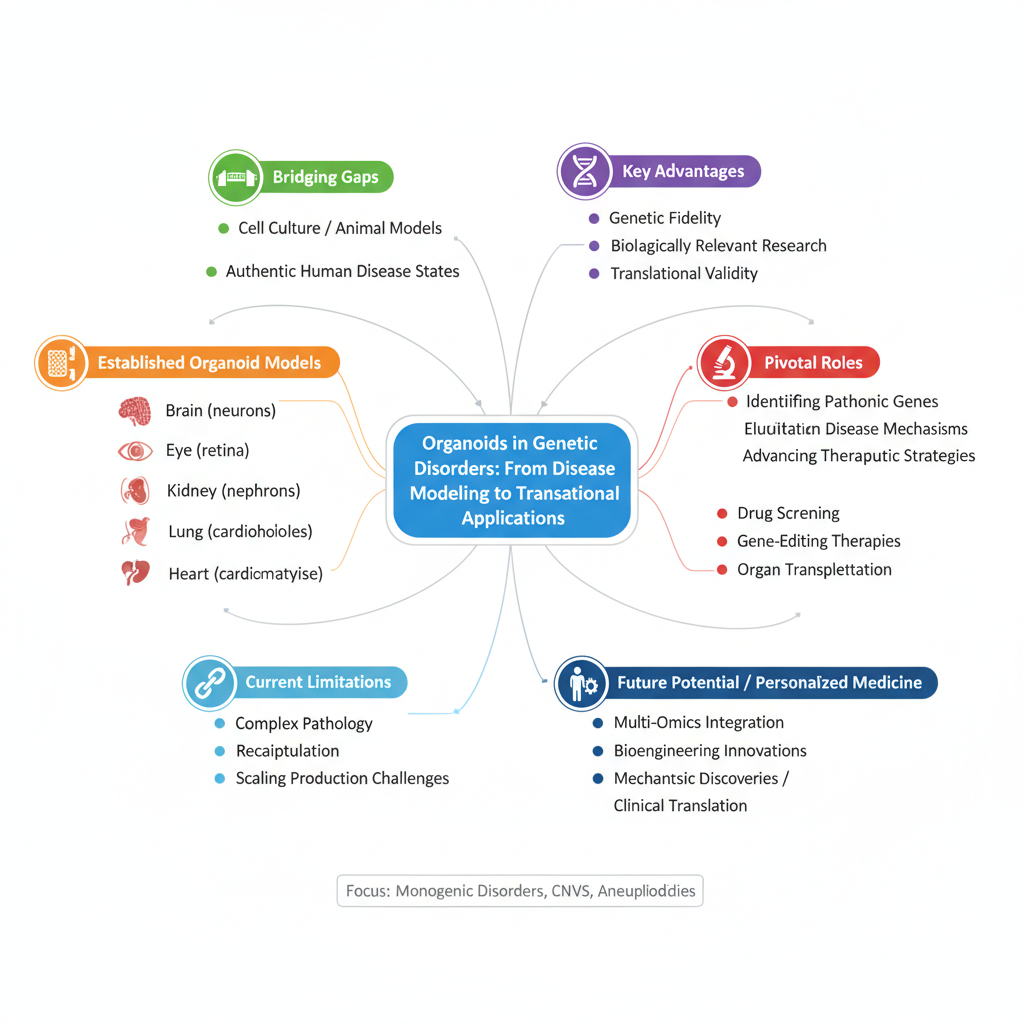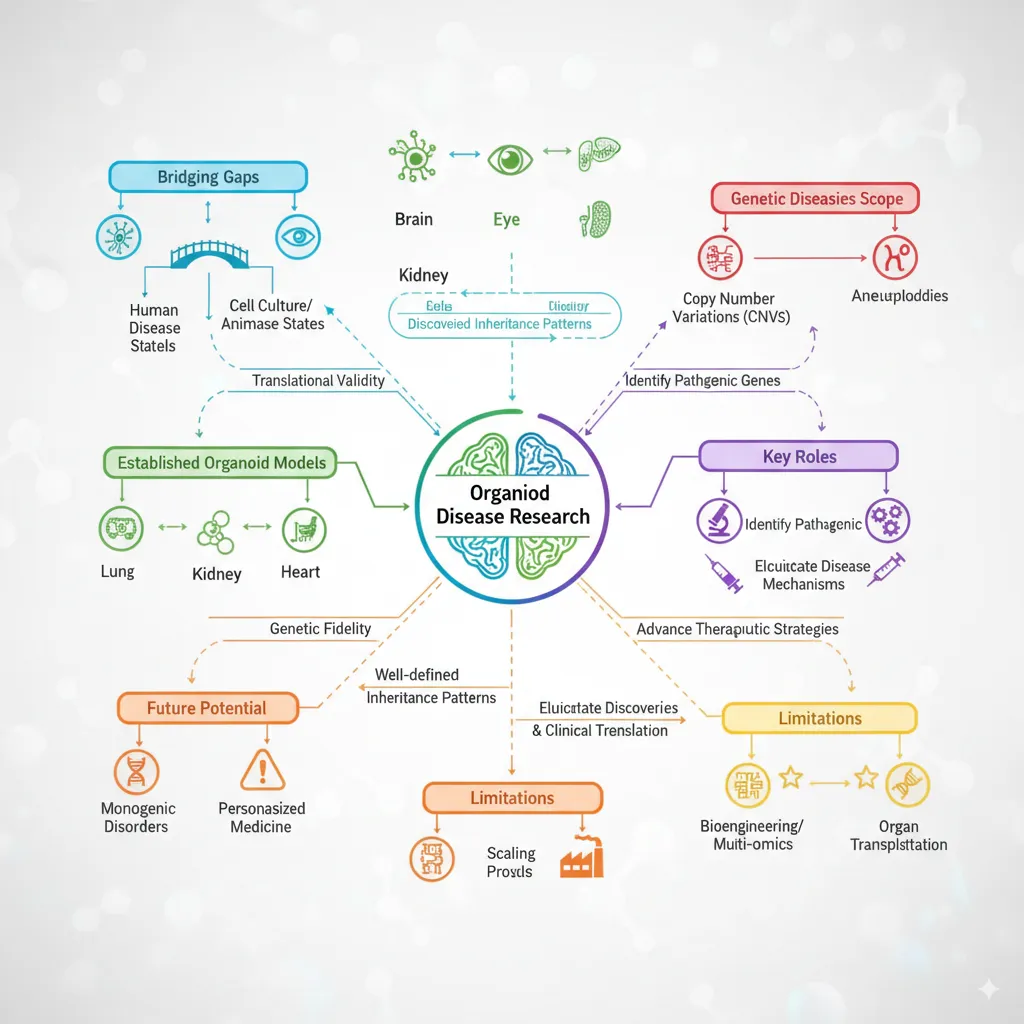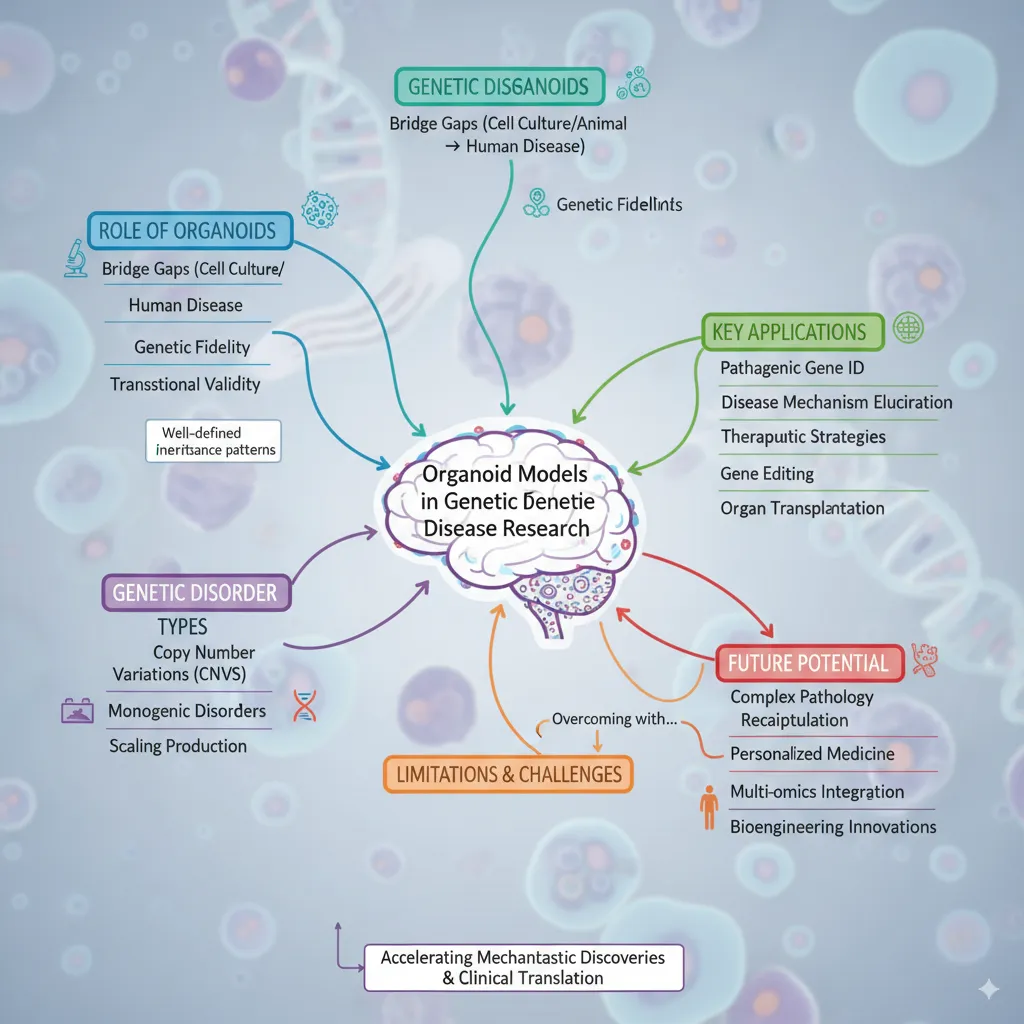类器官模型的出现极大地弥合了传统细胞培养/动物模型与真实人类疾病状态之间的差距,尤其是在遗传性疾病研究领域。类器官模型因具有高度的遗传保真性,使研究更加贴近生理相关性,并提升了研究成果的转化有效性。本文系统地分析了目前已经建立的各个器官(如大脑、眼、肾、肺和心脏)遗传疾病类器官模型,突出其在发现新致病基因、阐明疾病机制,以及推动包括药物筛选平台、基因编辑疗法和器官移植等治疗策略发展中的关键作用。此外,我们也对现有的局限性进行了批判性讨论,包括对复杂病理状态再现能力不足及规模化生产等挑战,并强调通过多组学整合和生物工程创新,类器官在个体化医学中的潜力。尽管“遗传性疾病”的范围广泛,本综述聚焦于具有明确遗传模式的疾病,如单基因疾病、拷贝数变异(CNVs)和非整倍体。虽然所涵盖的仅是这类疾病的一个子集,本文旨在为研究者提供该领域的全面概述,重点阐释类器官模型如何加速遗传病机理探索与临床转化。
Organoids in Genetic Disorders: from Disease Modeling to Translational Applications
Yuanhang Zhu 1, Nanshan Lin 2, Juan Li 1, Haoqian Zhang 3, Ping Zhang 1, Xin Cheng 1, Qian Yang 1, Ling Liu 4 5
Abstract
The emergence of organoid models has significantly bridged the gap between traditional cell cultures/animal models and authentic human disease states, particularly for genetic disorders, where their inherent genetic fidelity enables more biologically relevant research directions and enhances translational validity. This review systematically analyzes established organoid models of genetic diseases across organs (e.g., brain, eye, kidney, lung, and heart), highlighting their pivotal roles in identifying novel pathogenic genes, elucidating disease mechanisms, and advancing therapeutic strategies such as drug screening platforms, gene-editing therapies, and organ transplantation strategies. Furthermore, we critically address current limitations-including challenges in recapitulating complex pathologies and scaling production-while underscoring their potential for personalized medicine through multi-omics integration and bioengineering innovations. Although the scope of "genetic diseases" is broad, this synthesis focuses on disorders with well-defined inheritance patterns, such as monogenic disorders, copy number variations (CNVs), and aneuploidies. Despite covering only a subset of these conditions, this review aims to provide researchers with a comprehensive overview of the field, emphasizing how organoid-based approaches could accelerate both mechanistic discoveries and clinical translation in genetic disease research.

版本1

版本2

版本3
Nano Banana文生图目前看上去确实很牛逼了!直接用它来做一下应付性形式性的工作,是完全没问题了。或者不想逐字逐句去读摘要,也可以让它迅速生成一个这样的Graphical Abstract,可以很轻松获取你想要的大概内容。但是如果稍微用心点看这些图就可以很容易发现一些问题:
1. 单词拼写错误,这个问题,我试过很多次,始终没法避免,通过指令进一步让其修改也无法或很难实现;
2. 它所理解的一些逻辑关系可能没那么准确,或者理解的没问题,但是展现出来的逻辑关系不是非常好,例如,版本1中,Bridging gaps的表示方式就不是很好理解;
3. 摘要里的所有内容基本都放到图中了,三幅图都是,感觉是优点也是缺点,不过,是可以进一步要求Nano Banana只显示大框架的内容的。大家可以自己去谷歌AI Studio (https://aistudio.google.com/prompts/new_chat)尝试,没科学上网工具的,可以通过我们网站(https://sci.justscience.cn/chatgpt,需要登录和充值)尝试。
4. 总体上,AI味道还是太重,提示词方面还是得我们自己多测试、多优化。